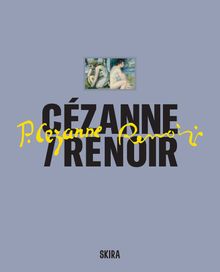ARTIST MONOGRAPHS
|
|
in stock $50.00 Free Shipping UPS GROUND IN THE CONTINENTAL U.S. |
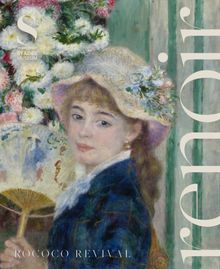 Renoir: Rococo Revival
Renoir: Rococo Revival
Published by Hatje Cantz.
Edited with text by Alexander Eiling, Juliane Betz, Fabienne Ruppen. Text by Michela Bassu, Guillaume Faroult, Marine Kisiel, Matthias Kruger, Mary Morton, Astrid Reuter.
More than any other Impressionist, Pierre-Auguste Renoir defined the treatment of the human figure for his generation, while also portraying the emergent Parisian bourgeois way of life. In this volume, Renoir’s painting After the Luncheon, which depicts three bourgeois figures enjoying tea, liquor and cigarettes after a meal in a restaurant, serves as the jumping-off point for a far-reaching examination of an important source of inspiration for the painter throughout his life: the Rococo. Considered trivial after the French Revolution, this style of painting, developed over the course of the 18th century, was typified by frivolous gatherings of beautiful, upper-class subjects in pastoral settings and lascivious boudoir scenes. The Rococo style experienced a renaissance in the 19th century and was widely celebrated during Renoir’s lifetime.
Published on the occasion of the Städel Museum’s major exhibition, this beautiful clothbound volume, containing over 300 color images, explores Renoir’s multifaceted connection to a once reviled tradition through illuminating juxtapositions of his art with the 18th-century works of such renowned masters as Antoine Watteau, François Boucher, Jean-Baptiste-Siméon Chardin, Jean-Honoré Fragonard and others.
Pierre-Auguste Renoir (1841–1919) was a founder of the style that became known as Impressionism, and one of the movement's most prolific members. Described by Herbert Read as “the final representative of a tradition which runs directly from Rubens to Watteau,” Renoir was a connoisseur and champion of feminine beauty. Surviving most of his contemporaries, Renoir lived to see his paintings hung at the Louvre alongside the Old Masters he so revered.
PUBLISHER
Hatje Cantz
BOOK FORMAT
Clth, 9 x 11 in. / 328 pgs / 350 color.
PUBLISHING STATUS
Pub Date 5/17/2022
Active
DISTRIBUTION
D.A.P. Exclusive
Catalog: SPRING 2022 p. 66
PRODUCT DETAILS
ISBN 9783775751346 TRADE
List Price: $79.95 CAD $109.95
AVAILABILITY
In stock
in stock $79.95 Free Shipping UPS GROUND IN THE CONTINENTAL U.S. |
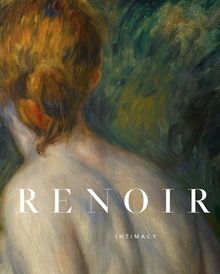 Renoir: Intimacy
Renoir: Intimacy
Published by Museo Thyssen-Bornemisza.
Text by Guillermo Solana, Colin B. Bailey, Flavie Durand-Ruel Mouraux.
The filmmaker Jean Renoir, son of Impressionist painter Pierre-Auguste Renoir, described how his father “looked at flowers, women and clouds in the sky as other men touch and caress.” Impressionism is generally conceived of as purely visual, an optical exploration of light-dappled surfaces and shifting colors. Renoir: Intimacy instead focuses on the central role of tactile sensations in Renoir’s canvases.
In all the different phases of his long career, working in a variety of genres (including group scenes, portraits, nudes, still lifes and landscapes), Renoir powerfully evoked the sense of touch. Renoir: Intimacy reveals the ways Renoir made use of the tactile qualities of volume, material and texture as a vehicle to depict intimacy in its different forms—from social intimacy among family and friends, to the erotic—and how that imagery is viscerally connected to the sensuality of the artist’s brushstroke and the physical surfaces of his paintings. Published to accompany an exhibition at the Museo Thyssen-Bornemisza in Madrid, this gorgeous volume includes more than 75 works by the artist, loaned from museums and private collections worldwide.
Pierre-Auguste Renoir (1841–1919) was a founder of the style that became known as Impressionism, and one of its most prolific members. Described by Herbert Read as “the final representative of a tradition which runs directly from Rubens to Watteau,” Renoir was a connoisseur and champion of feminine beauty. Surviving most of his contemporaries, Renoir lived to see his paintings hung at the Louvre alongside the old masters he so revered.
PUBLISHER
Museo Thyssen-Bornemisza
BOOK FORMAT
Hardcover, 10 x 11 in. / 200 pgs / 110 color / 35 bw.
PUBLISHING STATUS
Pub Date 4/25/2017
Active
DISTRIBUTION
D.A.P. Exclusive
Catalog: SPRING 2017 p. 16
PRODUCT DETAILS
ISBN 9788415113881 TRADE
List Price: $65.00 CAD $87.00 GBP £55.00
AVAILABILITY
Out of stock
STATUS: Out of stock Temporarily out of stock pending additional inventory. |
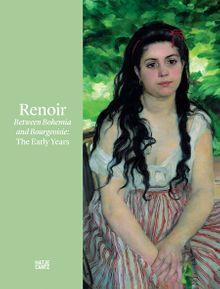 Renoir: Between Bohemia and Bourgeoisie
Renoir: Between Bohemia and Bourgeoisie
The Early Years
Published by Hatje Cantz.
Text by Augustin de Butler, Peter Kropmanns, Marc Le Coeur, Stefanie Manthey, Sylvie Patry, David Pullins, Nina Zimmer, Michael F. Zimmermann.
PUBLISHER
Hatje Cantz
BOOK FORMAT
Hardcover, 9.5 x 11.25 in. / 302 pgs / 107 color.
PUBLISHING STATUS
Pub Date 8/31/2012
Out of print
DISTRIBUTION
D.A.P. Exclusive
Catalog: FALL 2012 p. 32
PRODUCT DETAILS
ISBN 9783775732413 TRADE
List Price: $75.00 CAD $90.00
AVAILABILITY
Not available
STATUS: Out of print | 00/00/00 For assistance locating a copy, please see our list of recommended out of print specialists |
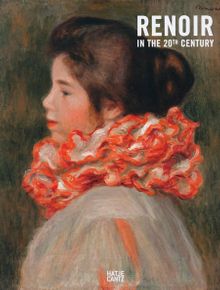 Renoir in the 20th Century
Renoir in the 20th Century
Published by Hatje Cantz.
Text by Roger Benjamin, Claudia Einecke.
PUBLISHER
Hatje Cantz
BOOK FORMAT
Hardcover, 9.25 x 12 in. / 480 pgs / 365 color.
PUBLISHING STATUS
Pub Date 3/31/2010
Out of print
DISTRIBUTION
D.A.P. Exclusive
Catalog: SPRING 2010 p. 169
PRODUCT DETAILS
ISBN 9783775725392 TRADE
List Price: $85.00 CAD $100.00
AVAILABILITY
Not available
STATUS: Out of print | 00/00/00 For assistance locating a copy, please see our list of recommended out of print specialists |

